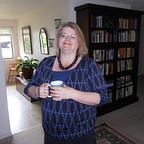5 Best Treatments for Seasonal Affective Disorder
Don’t Be Sad, Be Happy!
Winter has arrived. It’s dark and cold. It will be dark and cold again tomorrow.
The good news is that we have made it past the winter solstice. The days are getting longer. However, January tends to be a long and challenging month for many, especially those living with seasonal affective disorder.
Seasonal affective disorder is a form of depression that affects 5 to 14 percent of the United States population, depending on the study. Seasonal affective disorder typically occurs in the fall and winter months and is often referred to as SAD or “the winter blues.”
SAD is more common in women than in men and tends to run in families. If you have family members who have experienced seasonal affective disorder, depression, or bipolar disorder, you may be at higher risk of experiencing SAD. The further you live from the equator, the higher your chances of developing seasonal affective disorder due to the decreased sunshine in the winter months.
The good news is that seasonal affective disorder is manageable with a variety of treatment options. If you are experiencing seasonal affective disorder symptoms, talk to your therapist or primary care doctor for more information.
